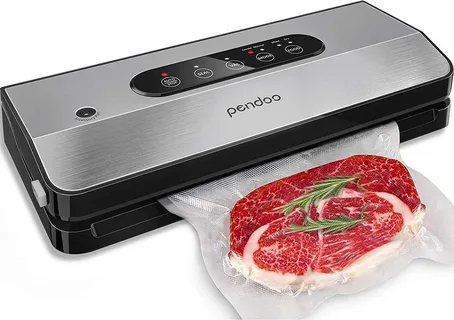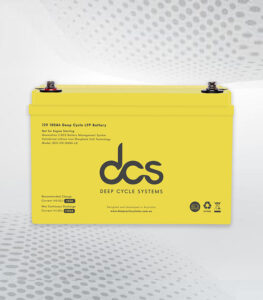Are you tired of constantly throwing out spoiled food and wasted leftovers? Do you want to save money on groceries and reduce your household’s food waste? Then investing in a vacuum food sealer for your kitchen may be the perfect solution. It extends the shelf life of your food and helps with portion control, meal prepping, and keeping your fridge and freezer organised. With so many options on the market, choosing the best vacuum food sealer can be overwhelming. That’s why they’ve created this ultimate guide to help you make an informed decision and find the perfect vacuum food sealer for your kitchen needs.
What Is a Vacuum Food Sealer, and How Does it Work?
A vacuum food sealer is a handy kitchen gadget designed to extend the life of your food. It removes air from specially designed bags, creating a tight seal around the contents. When you place food in a bag and insert it into the machine, the vacuum sealer sucks out all the air. This process minimises oxidation and reduces exposure to bacteria that can spoil your items.
Once most of the air has been removed, the machine seals the bag shut with heat. This airtight environment helps retain flavours and nutrients while preventing freezer burn or spoilage. Many models offer adjustable settings for different foods, ensuring gentle handling for delicate items like bread or herbs. With varying sizes and styles available, there’s likely a perfect fit for any kitchen setup.
The Importance of Seal Quality: What to Look For
Seal quality is crucial when selecting a vacuum food sealer. A tight seal ensures freshness and prevents spoilage, making it essential for preserving food. Look for machines with adjustable sealing settings. Different foods require different heat levels to achieve the perfect seal. Delicate items like fruits may need gentler handling than tougher meats. Pay attention to materials as well. High-quality bags from durable plastic resist punctures and tears better than cheaper alternatives.
Another factor is the machine’s suction strength. Stronger suction removes more air, resulting in an airtight environment that significantly extends shelf life. Consider how long the seal lasts under various conditions. A good vacuum sealer should provide a reliable barrier against moisture and oxygen over time, ensuring your food remains safe and flavorful for longer.
Benefits of Using a Vacuum Food Sealer
Vacuum food sealers provide numerous advantages for those looking to enhance their food storage methods and reduce waste.
Extended Shelf Life
Vacuum sealing removes air from packaging, significantly slowing down the oxidation process. This helps preserve the freshness and quality of food for a longer period.
Reduced Food Waste
By sealing food, leftovers and bulk purchases can be stored without fear of spoilage. This results in less waste and more savings over time.
Marinade Enhancement
Vacuum sealers allow for quicker and more efficient marinating. The absence of air facilitates deeper penetration of flavours, enhancing the taste of your meals.
Cost-Effective Storage
Using a vacuum food sealer can save money by allowing you to buy bulk and store items for future use. This way, you can take advantage of sales without worrying about spoilage.
Space Efficiency
Vacuum-sealed bags occupy less space in your freezer or pantry than traditional storage methods. This maximises your storage capacity and keeps your kitchen organised.
Versatility
Vacuum food sealers can be used for various types of food, including liquids, solids, and even delicate items like herbs. This versatility makes them a valuable tool in any kitchen.
Types Of Vacuum Sealers: Which One Is Right For You?
When it comes to vacuum sealers, you have options. Each type suits different needs and preferences. Countertop vacuum sealers are the most popular choice for home kitchens. They offer powerful suction and a variety of settings, making them versatile for food storage or sous vide cooking. Handheld vacuum sealers provide convenience without the bulk for those with limited space. They’re perfect for sealing bags on the go but may lack the same strength as their countertop counterparts.
If you’re focused on commercial use, consider chamber vacuum sealers. These machines create a tight seal by removing air from the bag and chamber. Ideal for larger quantities of food or delicate items like liquids. External clamp models balance affordability with functionality. They’re simple to operate while still delivering reliable results at home. Choosing the right sealer depends on your kitchen habits and how much effort you want to invest in meal prep and preservation.
Choosing Between a Vacuum Pack Sealer Machine and Traditional Storage Methods
When it comes to food storage, choosing between a vacuum pack-sealer machine and traditional methods can significantly impact the longevity and freshness of your food. Traditional storage methods, such as plastic bags or containers, often allow air to enter, leading to spoilage and freezer burn. In contrast, vacuum-sealing removes air from the packaging, creating an airtight environment that helps preserve food for much longer. This extends the shelf life of perishables and maintains their flavour and nutritional value, making them a popular choice among home cooks and meal preppers.
While traditional storage methods can be convenient for short-term use, they may not be sufficient for those looking to store food for an extended period. Investing in a vacuum pack sealer machine can provide a more efficient and effective solution for food preservation. With various models available, these machines can quickly seal food items, making them an excellent option for bulk purchases or meal prep. By sealing foods in airtight bags, you can prevent waste and save money, ensuring that your kitchen is stocked with fresh ingredients whenever you need them.
Vacuum Sealer Accessories: Enhancing Your Sealing Experience
Vacuum sealer accessories can significantly enhance your food preservation experience. From specialised bags to hose attachments, the right tools make a difference. Consider vacuum sealer bags designed for various uses. Some are thicker and more durable, perfect for long-term storage. Others come with textured surfaces that improve sealing efficiency. Hose attachments open new possibilities for sous vide cooking or preserving jars of liquids and dry foods. They create an airtight seal while maintaining freshness.
Also, look into roll storage systems that allow you to customise bag sizes based on your needs. This flexibility helps reduce waste while ensuring you have the appropriate size. Don’t forget about cleaning kits as well! Maintaining your machine is essential for longevity and optimal performance. Investing in these accessories elevates your food storage game effortlessly.
Tips for Properly Using and Maintaining Your Vacuum Food Sealer
To ensure optimal performance and longevity of your vacuum food sealer, follow these essential tips for proper use and maintenance.
Read the Manual
Before using your vacuum food sealer, familiarise yourself with the manufacturer’s instructions. Understanding the features and functions will help you maximise its capabilities.
Prepare Food Properly
Always clean and dry food before sealing. Trim excess fat and remove moisture to prevent spoilage and ensure airtight seals.
Use the Right Bags
Choose compatible vacuum bags or rolls. Using the correct type will enhance sealing efficiency and prevent leakage during storage.
Avoid Overfilling
Do not overfill bags, leaving enough space at the top for proper sealing. This prevents air from being trapped inside the bag.
Regularly Clean the Machine
After each use, wipe down the vacuum food sealer and clean the sealing area. Regular maintenance prevents buildup and ensures a proper seal.
Store Properly
Store your vacuum food sealer in a cool, dry place when not in use. Keeping it protected from dust and moisture will extend its lifespan.
How a Vacuum and Seal Machine Can Revolutionise Your Food Storage
A vacuum and seal-machine is a game-changer for optimising food storage and reducing waste. By removing air from storage bags and containers, these machines create a tight seal that protects food from spoilage, freezer burn, and loss of flavour. This method extends the shelf life of perishable items and helps maintain their nutritional value. Whether you’re storing leftovers, bulk purchases, or preparing meals for the week, a vacuum sealer provides a convenient and efficient solution for keeping food fresh and ready to use.
Using a vacuum and seal-machine also enhances meal prep and cooking flexibility. With foods sealed in individual portions, it’s easy to grab what you need without digging through the freezer or pantry. The vacuum sealing process is ideal for marinating meats and infusing flavours quickly, as the sealed environment allows marinades to penetrate more deeply. For those who enjoy sous vide cooking, vacuum-sealed bags are essential for achieving perfectly cooked dishes. Investing in a vacuum and seal machine improves food storage and elevates your culinary experience by making meal preparation quicker and more organised.
Understanding Vacuum Sealer Bags: Materials and Compatibility
Vacuum sealer bags come in various materials designed for specific storage needs. Most commonly, you’ll find polyethylene and nylon. Polyethylene is affordable and great for short-term storage. It’s often used for items that won’t be frozen. Nylon bags, on the other hand, offer sturdiness and puncture resistance. Due to their barrier properties against moisture and oxygen are ideal for long-term freezing or sous vide cooking.
Compatibility matters, too. Not all vacuum sealers work with every type of bag. Some machines require specially designed bags for optimal sealing, while others can handle generic options. It’s essential to check your vacuum sealer’s specifications before purchasing any bags. This ensures you get the most out of your food preservation efforts without unintentionally compromising quality or safety during storage.
Comparing Manual vs. Automatic Vacuum Sealers
The choice between manual and automatic vacuum sealers is significant. Manual vacuum sealers put you in control. You decide how much air to remove based on your preferences for each item. On the other hand, automatic vacuum sealers offer convenience with a simple push of a button. They sense when to stop sealing, making them user-friendly for busy kitchens or novice cooks.
Manual models typically have a lower price point, which is appealing if you’re budget-conscious. However, they might require more skill and practice to achieve optimal results.Automatic versions can handle larger quantities efficiently but usually require an upfront investment. Choosing between these two types ultimately depends on your cooking habits and personal style in the kitchen. Each has its pros and cons that cater to different needs.
Eco-Friendly Practices: Reducing Food Waste with a Vacuum Sealer
Vacuum sealers are a game-changer for eco-conscious kitchens. They significantly extend the shelf life of food, helping you minimise waste. By removing air from packaging, vacuum sealers slow spoilage and freezer burn. This means less tossing out spoiled fruits or leftover meals. It’s not just about saving money; it’s also about being kinder to our planet. Using a vacuum sealer encourages bulk buying, which often reduces plastic use when shopping at stores with minimal packaging options. You can buy larger quantities and divide them into portions without fear of deterioration. Many vacuum-sealed bags are reusable or recyclable, decreasing your environmental footprint. Embracing these practices fosters sustainability while keeping your kitchen organised and efficient.
Common Mistakes to Avoid When Using a Vacuum Food Sealer
Using a vacuum food sealer can be a game changer for your kitchen, but there are pitfalls to avoid. One common mistake is overfilling bags. This can lead to inadequate sealing and spoilage. Another issue arises from not pre-freezing moist foods like fruits or meats before sealing. The moisture may interfere with the seal, causing air pockets to undermine freshness.
Not using the right bag type is also problematic. Cheap alternatives might not withstand the vacuum process properly, leading to tears and leaks. Some users forget to clean their machines regularly. Residue buildup affects performance and can result in food contamination. Neglecting proper storage techniques post-sealing undermines all efforts made during the sealing process. Always store sealed items appropriately for maximum longevity and quality preservation.
Conclusion
In conclusion, choosing the best vacuum food sealer for your kitchen can significantly enhance your food storage capabilities, prolong the freshness of your ingredients, and reduce waste. By considering the sealer type, vacuum strength, additional features, and ease of use, you can find a model that suits your specific needs and lifestyle. Whether you’re a home cook, meal prepper, or simply looking to save leftovers, investing in a quality vacuum food sealer is a decision that will pay off in both convenience and food preservation.
FAQ’s
What is a best vacuum food sealer, and how does it work?
A best vacuum food sealer removes air from specially designed bags or containers to create an airtight seal. This process helps preserve food’s freshness by preventing oxidation and freezer burn.
How do I choose the right type of vacuum sealer for my needs?
Consider factors like frequency of use, types of food you’ll be sealing, and available space in your kitchen. Countertop models offer more power for bulk sealing, while handheld versions are great for occasional use.
Can I reuse vacuum sealer bags?
Yes! Many vacuum sealer bags are reusable if not contaminated with raw meat or other foods that can harbour bacteria. Just wash them thoroughly before reusing them.
Are there eco-friendly options available when using a vacuum food sealer?
Absolutely! Look for biodegradable or recyclable vacuum bags made from sustainable materials. These options help reduce waste while still keeping your food fresh.
What common mistakes should I avoid when using a vacuum food sealer?
Avoid overfilling bags, which can prevent proper sealing. Ensure the bag edges stay clean during sealing to maintain an airtight closure, and always check compatibility between your machine and the type of bags used.
These insights will enhance your understanding and experience with a vacuum food sealer in your kitchen journey.




